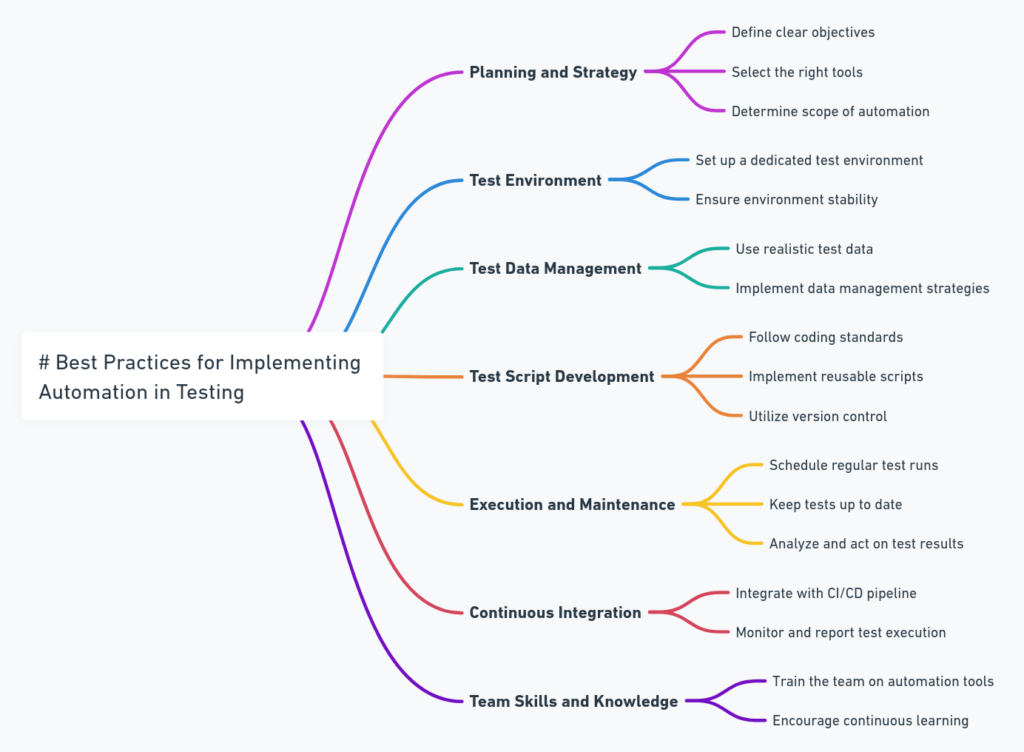As software projects get more complicated and timeframes are shorter conventional testing methods will not suffice. This is the point where smart testing comes into the picture.
Smart testing is a strategy that is focused on enhancing the process of testing using advanced methods and tools that increase efficiency, speed up the process and increase the quality of tests.
Through integrating intelligent testing in your strategy for testing it is possible to achieve greater results with less effort, while ensuring that your software is in line with the most stringent standards of quality at a reasonable cost.
No matter if you're dealing in automated testing, test optimization or any other advanced techniques for testing knowing how to effectively implement smart testing can change the way you approach quality assurance and allow you to remain competitive in an ever-changing business.
Understanding Smart Testing
Smart testing is a method which focuses on the effectiveness and efficiency that the test process can provide by focusing on the most crucial areas that the program needs to address.
This technique makes use of automated, analytics and testing tools to simplify the process, ensuring that the effort is focused on the areas that require the most effort.
Contrary to conventional testing techniques that can cover each aspect of a system equal effort smart testing makes use of the results of previous tests, code modifications and other relevant information to pinpoint areas of high risk or functions.
In this way, testing is more than a simple checkpoint, but an essential component in the development and maintenance of software.
Benefits of Implementing Smart Testing Techniques

Utilizing intelligent testing techniques can provide numerous advantages that greatly improve the efficiency and quality of the entire software development cycle. Some of the benefits are:
Reduced Testing Time
By focusing on the areas which are the most vulnerable to flaws, intelligent testing cuts down on the amount of time required for testing.
Cost efficiency
The time saved on testing translates into lower costs as resources are utilized more effectively.
Quality Improvement
Prioritizing high-risk areas Smart testing will ensure that the most critical bugs are discovered and fixed quickly and result in a higher quality product.
Enhanced Test Coverage
Intelligent testing tools and methods provide greater coverage of the source code by selecting and focusing on components of the application that are most likely to have imperfections.
A faster time to market
With shorter testing times and better quality, the timeframe for new product launches can be increased, which gives an advantage in competition.
Incorporating Automation in Testing
Importance of Automation in Testing
Automated testing consists of specific software to carry out an entire test case and then evaluate the actual results with the expected results.
This method is essential because of a number of reasons:
- Efficiency: Automation dramatically accelerates the testing process which allows greater tests to be completed within a shorter amount of time.
- Tests that are automated can be repeated at the same accuracy, which ensures consistent tests that are reliable and accurate.
- Automation allows it to be possible to expand the scope of testing, which includes functional, regression, and load tests, without extra budget or time.
- Feedback Loop: Automation of testing gives quick feedback to developers, making it easier to make changes and faster to the software.
Popular Automation Tools for Smart Testing
Many automated tools are now popular among testers and developers to assist in developing innovative testing strategies. The tools include:
- Selenium is a powerful instrument for testing web-based applications that can be used with multiple web browsers and programming languages.
- Appium is similar to Selenium however, it is designed to test mobile apps that supports iOS as well as Android platforms.
- Jenkins is an open-source automation server that allows continuous integration as well as facilitates the automated testing in terms of technical aspects.
- TestComplete: Provides an extensive test automation platform for mobile, web, and desktop-based applications.
Best Practices for Implementing Automation in Testing

In order to incorporate automation effectively into your testing strategies Consider the following recommended techniques:
Start small
Begin by automating only a small portion of your tests. Gradually expand your automation as you become familiar with the software and processes.
Select the right tools
Choose the automation tools that are best suited to the needs of your project in terms of function as well as compatibility and price.
Prioritize tests with high-ROI
Prioritize testing that provide the greatest ROI including high-risk areas as well as regression test.
Maintain and update tests
Automated tests should be regularly updated and maintained to ensure they remain relevant and efficient as the software develops.
Educate Your Team
Make sure that your team members are well-trained the tools you choose to use and the fundamentals of intelligent testing in order to reap the advantages of automation.
Test Optimization Techniques
Optimization of tests is an integral aspect of smart testing focused on improving the efficiency of testing and effectiveness.
Utilizing a variety of methods as well as tools, organizations are able to simplify their testing processes and ensure that they are not just meeting the required quality standards but also conserve time and money.
In this article we'll explore the reasons why testing optimization is vital and explore ways to achieve it, and then discuss the tools to improve efficiency in testing.
Why Test Optimization is Essential
Testing optimization is essential for a variety of reasons. It aids in determining the most important tests to run, and thereby cutting down the time it takes to test.
By optimizing tests, resources are directed to areas that pose the greatest risk and impact, resulting in more efficient testing outcomes.
In addition, it lowers the cost of redundant or ineffective tests, which makes the entire testing process more cost-effective and efficient. In the end, it's about making more tests with less and allowing for a faster time to market, without any compromise on quality.
Strategies for Test Optimization
There are a variety of strategies that can be used to enhance your testing process:
- Prioritization of test case: Based on impact and risk Prioritize tests that test the most crucial functions or have the highest risk of failing.
- Shifting to the left: Testing early in the development process may aid in identifying and fixing issues earlier, which can reduce later stage testing efforts.
- Automating tests wherever feasible: Automated tests could dramatically reduce the amount of time needed to perform repetitive testing and allow manual testers to concentrate on more complicated testing scenarios.
- Making use of test data management: Ensuring high-quality, pertinent test information is readily available will significantly cut down the time required to set up test environments.
Tools for Enhancing Testing Efficiency
Several tools can help in optimizing your testing process. Tools for managing tests such as TestRail or Zephyr offer frameworks for organizing and prioritizing tests, making easy to handle huge test suites.
Automating tools like Selenium and ContextQA allow for the automatization of tests that are repetitive, thus which frees up time for other crucial testing activities.
Tools like Jenkins or CircleCI allow continual integration as well as delivery of services, helping to facilitate the shift-left method by making testing more integrated early in the design process.
Measuring Success in Smart Testing
The ability to measure the success of your innovative testing approach is vital to assessing it's effectiveness, and also identifying potential areas that could be improved.
The appropriate KPIs (KPIs) as well as analysis techniques will provide insight into the extent to which testing methods are functioning and where changes need to be made.
Key Performance Indicators for Smart Testing
To gauge the success of testing smart, take into account these KPIs:
- Test coverage: Determines the degree that your tests cover the necessary functionality and the codebase.
- Defect detection rate: Evaluates how effectively your testing identifies defects.
- Time to test execution It tracks the time required to run tests, and identifies areas where optimization could decrease wait times.
- Testing costs: Evaluate the effectiveness of your testing approach by taking how much you will pay per defective discovered.
How to Analyze and Improve Testing Processes
The process of analyzing the performance of your test strategy requires constantly reviewing all KPIs as well as comparing these to established benchmarks or goals.
Tools such as dashboards or reports in the software for managing tests can help visualise the performance trends over time.
Regularly conducting retrospectives with your team members who are testing to discuss what's working and what's not could also give valuable information.
Based on this information you could decide to modify your testing approach for instance, by increasing the automation of certain areas, or redistributing resources or revising your test priority requirements.
Continuous improvement is essential for maintaining a smart and efficient test strategy.
Book a Demo and experience ContextQA testing tool in action with a complimentary, no-obligation session tailored to your business needs.
Conclusion
Implementing intelligent testing into your strategy for testing transforms the way software quality assurance and testing is approached.
Through the use of automation, optimizing tests according to risks and impacts and focusing on the most important software components, businesses will see significant improvements in effectiveness and performance.
The efficiency of smart testing speeds up the process of testing, which reduces the amount of time and resources required.
- Accuracy: It raises the chance of finding important bugs early during the development process.
- Cost-effectiveness: By maximizing tests and focusing on areas of high impact Smart testing can cut down on the costs of extensive manual testing.
- Implementing a smarter testing approach means not just keeping up with the ever-changing technology environment but also ensuring that you stay ahead of the curve.
This allows teams to create top-quality software faster and more efficiently, while meeting the ever-growing requirements of both stakeholders and customers alike.
Implementing smart testing in your testing plan isn't only an upgrade. It's an essential step to stay relevant and effective in the current fast-paced digital environment.
Also Read - Understanding the Difference Between Test Cases vs Defects in Software Testing
We make it easy to get started with the ContextQA tool: Start Free Trial.
